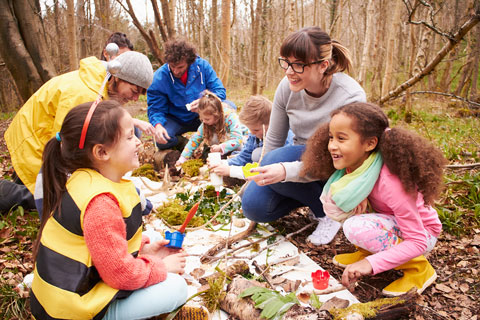Most of the Illinois Early Learning Benchmarks can be met when young children are involved in project work. Projects are like good stories. They have a beginning, middle, and end. The middle phase is for fieldwork and finding answers to children’s questions. It can last from three weeks to several months. Here are some ways to help children do fieldwork. (See also The Project Approach: Phase 2—Getting Ready for Fieldwork.)
Visit sites where children can do fieldwork.
- Before a site visit, help children plan what they might draw, photograph, collect, or record. Invite them to decide who will ask specific questions. Ask for volunteers for each task. (“Who will draw the dashboard? Who will record the bus starting up?”)
- Give children clipboards, paper, and pencils to make observational drawings during site visits. They can also take bags for collecting things.
- On the site visit, take along a list of who agreed to do which tasks. Gently remind children of their responsibilities as needed.
Encourage children to collect information outside of class.
- Children can gather information on some topics from their families. For example, they can take questionnaires to family members to find out how many have had broken bones. They might also draw or photograph family items related to the project.
- Children can also bring in objects from their families related to the topic. Help them make labels, and display the objects together on a countertop or table.
Invite guest experts.
- Let the children practice asking their questions before the expert comes to visit. If necessary, gently remind them to ask their questions during the visit.
- After the visit, invite the children to talk about what the visitor told them and showed them. Write their main points down on chart paper, and post the list in the classroom.
Help children discuss each other’s work.
- If a small group of children is going on a site visit, encourage them to ask those who are not going, “What do you want us to find out for you?”
- When children return from fieldwork, let them report what they found to the whole class. They can share their drawings, digital photos, or things they have collected. Encourage the children who did not go on the trip to ask questions of those who did.
Monitor progress.
- As a project proceeds, help the children check their original topic web and their original list of questions and predictions (See The Project Approach: Phase 1—Getting Started). Keep track of questions the class has answered and list new ideas or questions that have come up.


 PDF
PDF